Harmony: The Fall of Reverie – Switch Review
"A visually pleasing adventure."
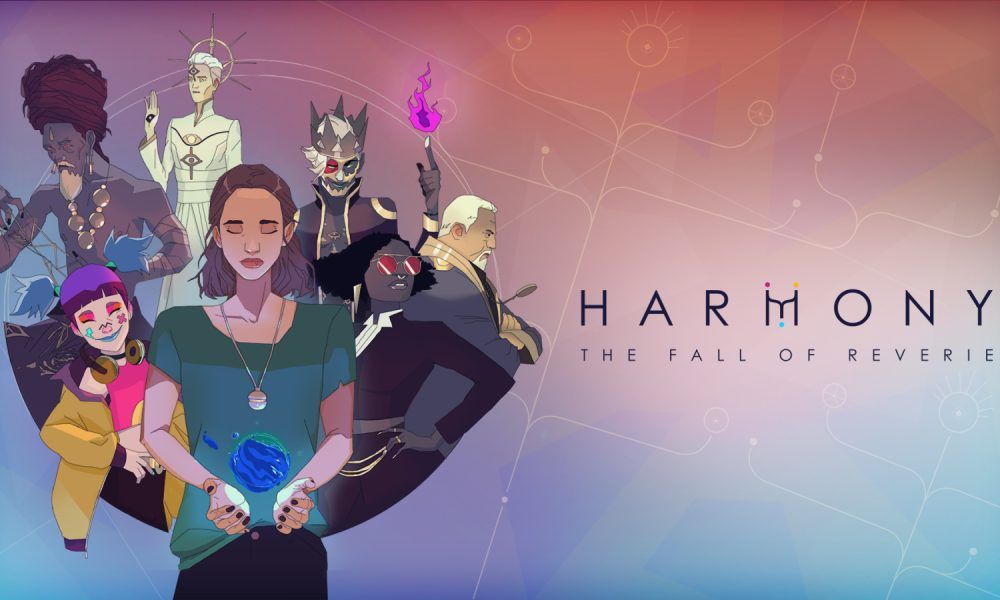
Harmony: The Fall of Reverie is a DON’T NOD visual novel now available on the Nintendo Switch. The plot, presumably set some year in the 2030s, revolves around Polly, a woman returning to her (fictional) hometown of Atina, in Southern Europe, in hopes of locating her missing mother. After discovering a mysterious necklace in her old home, Polly is whisked away to the intangible realm of Reverie, “where ideas and concepts become real.” Here, we learn that she is a chosen one: a clairvoyant Oracle called Harmony by the resident Aspirations, who are humanity’s manifested desires. They are strengthened by human actions.
From then on, player choices in the material world, known as Brittle, have ripple effects on Reverie’s six Aspirations, and vice versa. Polly effortlessly and sometimes inadvertently slips between the two realms. She sees the Aspirations pop up in Brittle (while no one else can) and hears their voices in her mind. Somewhat creepily, they can also read some of her thoughts. Basically, there’s no ignoring them!
Meanwhile, a mega-corp specialising in new tech and services called Mono Konzern (yes, sole concern: profits) has quickly risen to dominate Atinan society during Polly’s five-year absence. The epitome of an evil corporation. So, how are mystical Reverie, humankind’s Aspirations, corrupt Mono Konzern, and Atina’s ancient Oxian culture connected to your mother’s disappearance? Which Aspiration is driving the recent changes on the island, and why? And which one will Polly/Harmony choose to rule over Brittle?
The Good
Harmony: The Fall of Reverie’s varied backdrops, dynamic character sprites, and interspersed video cutscenes are fabulous. The illustrated character sprites are animated during conversations, complementing the voice acting, and adding some life and movement to what could’ve been a more static experience.
Like many narrative-driven visual novels, the game features life-or-death choices, branching plotlines, and multiple endings. As in End of Lines, each option strengthens a stat tied to an archetype. This means one of the Aspirations living in Reverie: Bliss, Power, Bond, Truth, Chaos, and Glory, which are “incarnations of humanity’s yearnings, desires, and intelligence.” Players are asked to examine their values (which Aspiration is best for this situation?) and select wisely to reach their desired outcome.
Similarly, as with other graphic novel games, the diverging plotlines and endings improve replayability. The overarching premise examines your ethical choices in light of personal and societal issues, such as complicated family relationships, loss, power dynamics, cultural change, and corporate misconduct.
In terms of gameplay nitty-gritty, Harmony organises its branching storylines into a node map: the Augural. Most nodes represent a choice, usually conversations, and have requirements (like Aspiration crystals) and rewards (like Aspiration crystals). The Augural’s branches reflect Polly’s clairvoyance, sharing glimpses of plot outcomes and explaining which crystals you need to obtain your desired objectives. Sometimes, once you’ve made your selection, other nodes/routes are blocked off. And sometimes you won’t see the consequences of your decisions until later in the story (kinda like real life lol).
Along with multiple routes, the worldbuilding is another plus. But if all the new terms, concepts, and placenames get confusing, Harmony – like other games in the genre, e.g., Paranormasight – provides detailed files (in the Codex) about citizens, society, Aspirations, sanctuaries, and mythology. For example, the fictional Atina (inspiration: Athena?) is an island city state, sort of like Singapore. It is “the oldest inhabited city in the Mediterranean Sea … [and] is now one of the most technologically advanced city states in Southern Europe.” The island is divided between the historic district of Alma, representing Atina’s cultural, intellectual, and artistic legacy (and containing the hippie commune of The Naiads), and New Elysia, the skyscraper-lined concrete jungle bolstered by Mono Konzern’s all-encompassing ascendancy.
TL;DR
- Aesthetically pleasing
- Animated character sprites and cutscenes; full voice acting
- Intriguing branching plotlines with multiple endings
- Detailed worldbuilding notes/files
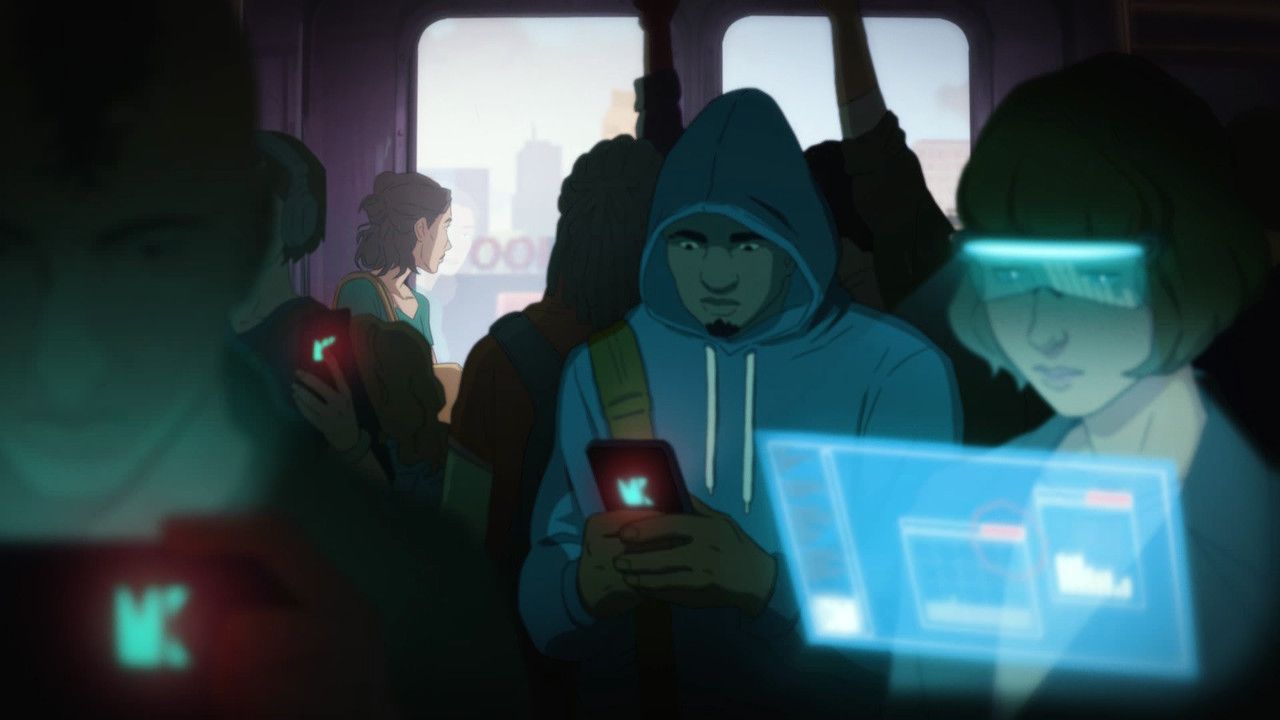
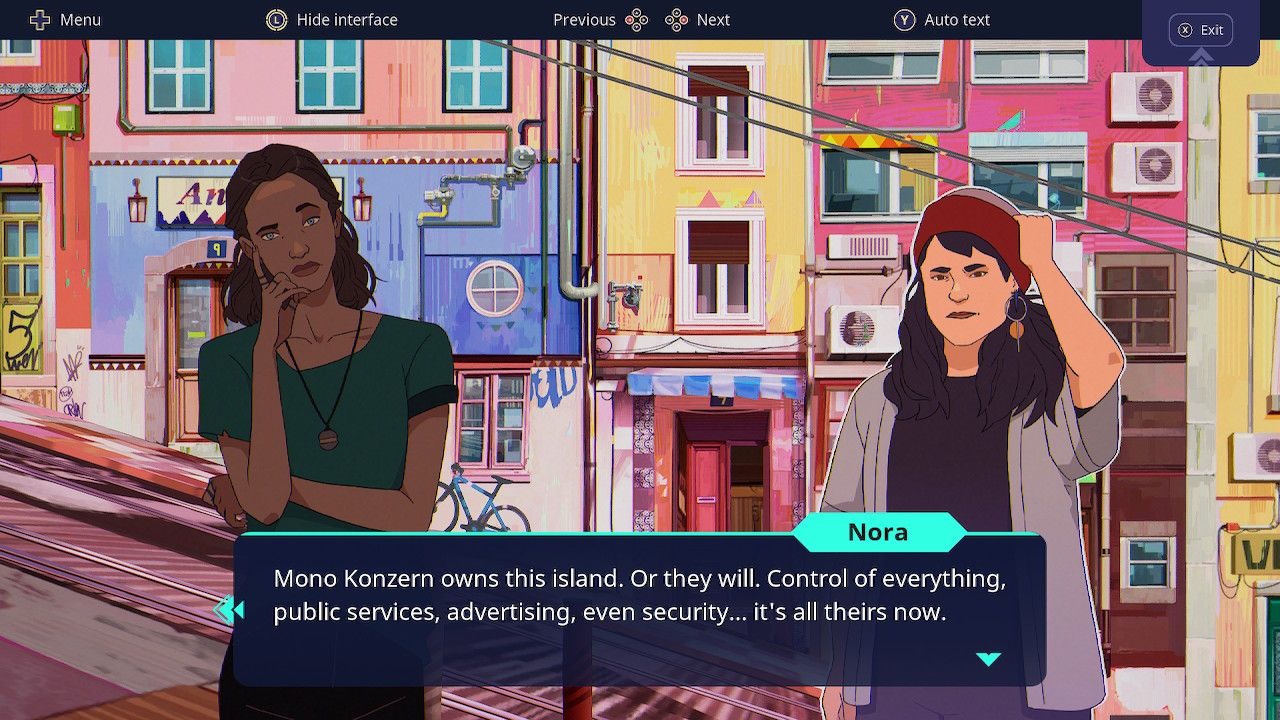
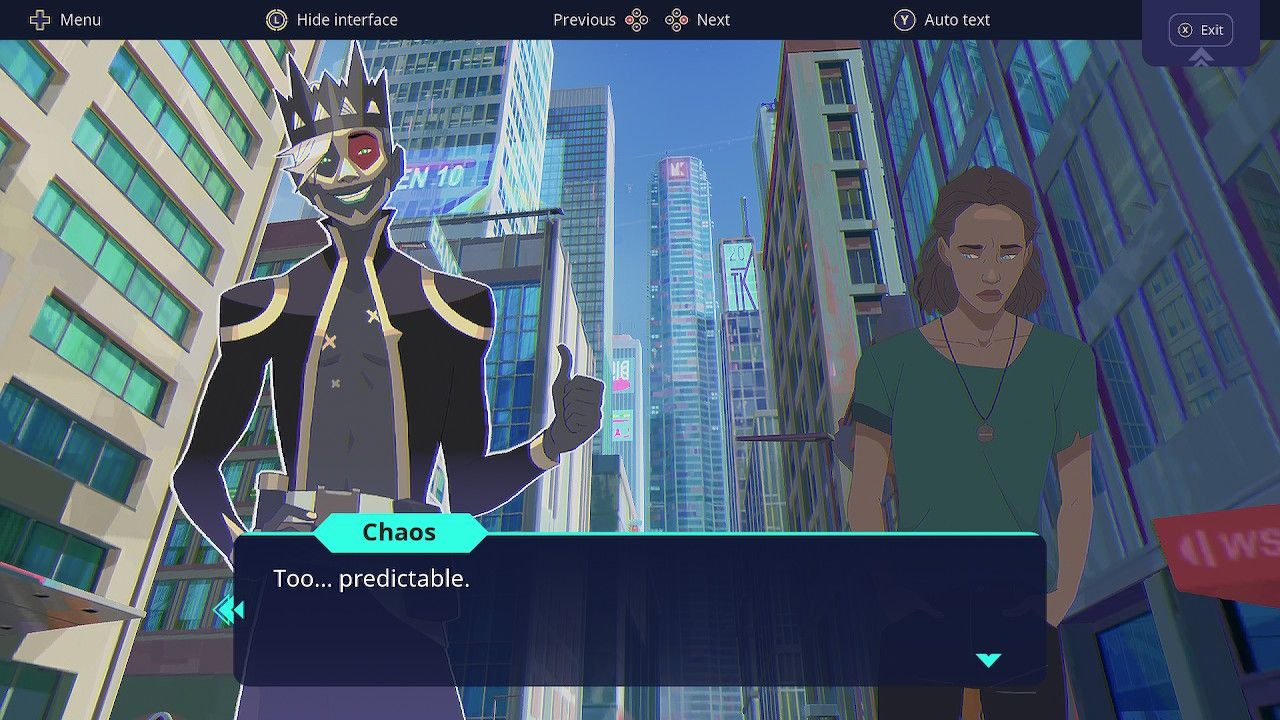
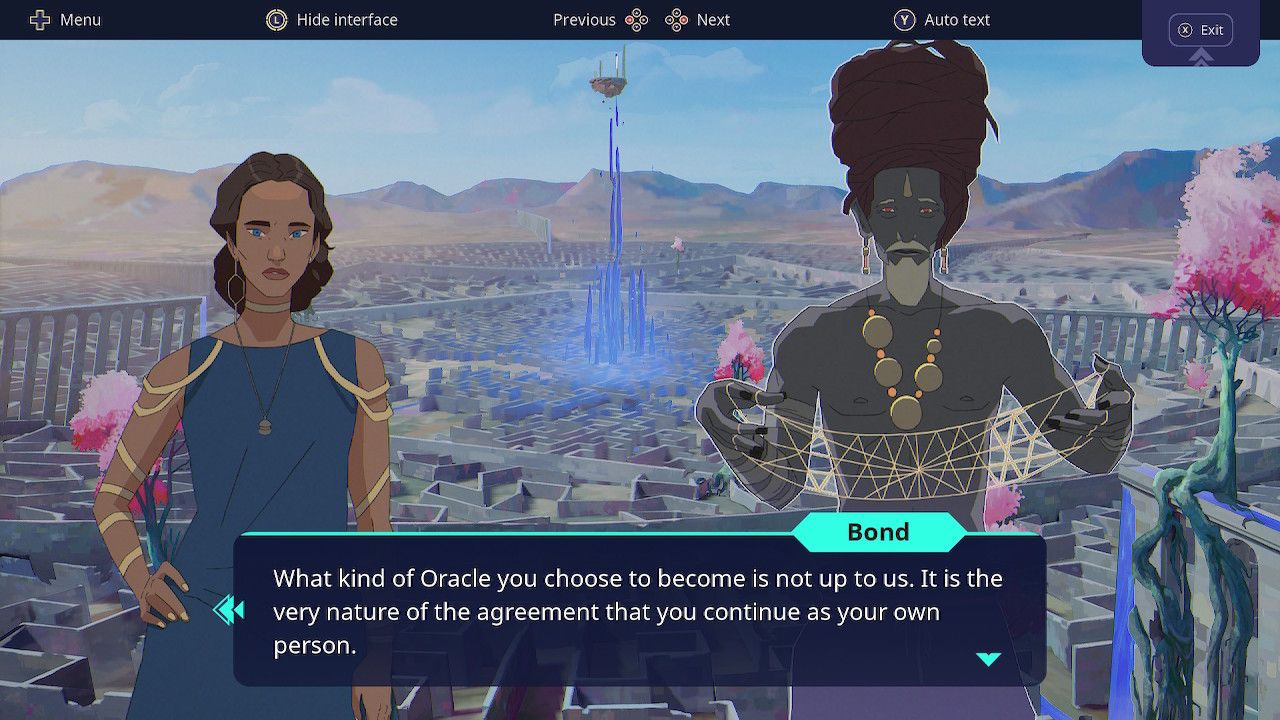
The Bad
While I appreciate the thought that went into Harmony: The Fall of Reverie’s world, during the game’s first 20 minutes the player is thrown headfirst into a lot of worldbuilding exposition – new ideas and terminology. It felt sort of like an exposition dump. Nevertheless, the handy dandy Codex helps us keep track of this data.
Like the Codex, the Augural map assists us in keeping track of stuff. But while it illustrates the game’s plotlines, as previously mentioned, the nodes have prerequisites to be met. Despite the extensive tutorial explaining how the system works, I felt it became a bit frustrating to figure out which nodes were playable and when, and how they were interrelated. So, I’d just click on random nodes until one worked (lol).
Relatedly, games with multiple narrative outcomes can be a double-edged sword. As mentioned in my Loop8: Summer of Gods review, these games require you to re-read or skip heaps of the exact same text to achieve their different endings. If you are a true enthusiast, you’ll end up consuming much (tedious?) time in climbing those various branches. But I guess that’s the case with any game genre.
Lastly, because I’m involved in the mental health destigmatisation and lived experience arenas, I was a bit uncomfortable over one word choice. Aspiration Chaos, who is pretty much a Batman Joker–like trickster figure, is described as producing “manic laughter.” Might come across as a bit disrespectful to those living with bipolar disorder, particularly when associated with such a character. I'm sure it wasn't their intention, and the game shows sensitivity with a disclaimer about its exploration of personal loss, and to take breaks if necessary.
TL;DR
- Begins with exposition dump
- Augural (plot map) could’ve been simplified
- Re-read/skip same text each playthrough
- “Manic laughter”: not the best word choices

Final Score: 7/10
For graphic novel gamers, Harmony: The Fall of Reverie offers a visually pleasing adventure, with voice acting and animations, that makes you question your Aspirations. The narrative has enough secrets to reveal and decisions to ponder that you’ll likely enjoy your time in Atina and Reverie.
Thank you for checking out our Harmony: The Fall of Reverie Switch review, thank you to DON'T NOD for providing the review code and thank you to our Patreon Backers for their ongoing support:
- Andrew Caluzzi (Inca Studios / Camped Out)
- Bel Cubitt
- Jack Caven
- NintenVania Podcast
- RedHero
